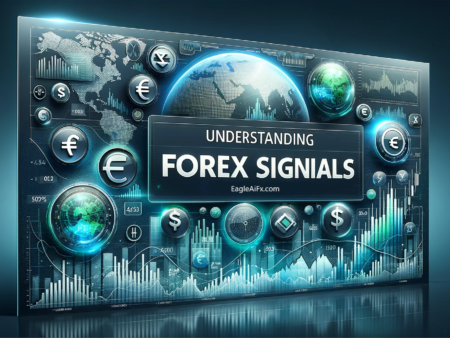Table of Contents
Introduction to Forex Trading
Forex indicator is commonly use in world of forex trading. The term Forex, or foreign exchange market, is the world’s largest financial market, where currencies are traded around the clock. Unlike stock markets, forex trading involves pairing two currencies, like EUR/USD or GBP/JPY, and speculating on their value against each other. This global market offers immense opportunities but requires a good understanding of its dynamics.
Understanding Technical Analysis
Technical analysis is a crucial aspect of forex trading. It involves analyzing statistical trends gathered from trading activity, such as price movement and volume. Unlike fundamental analysis, which looks at economic indicators and news events, technical analysis focuses on identifying patterns and trends in price charts to predict future movements.

Overview of Technical Indicators
Technical forex indicators are mathematical calculations based on the price, volume, or open interest of a currency pair. They are used to forecast financial or economic trends. Broadly, these forex indicators fall into four categories: trend, momentum, volume, and volatility indicators, each helping traders make informed decisions.
Top Key Indicators in Forex Trading
Moving Averages (MA)
Moving Averages (MA) are among the most widely used indicators in forex trading, used to identify the direction of a trend. The two primary types are Simple Moving Average (SMA) and Exponential Moving Average (EMA). SMA calculates the average price over a specific period, whereas EMA gives more weight to recent prices.
Example: Consider a 50-day SMA on the EUR/USD chart. If the current price is above the SMA, it suggests an uptrend. Conversely, if it is below, a downtrend is indicated. Traders often watch for crossovers between short-term and long-term MAs as a signal for potential reversals.
Relative Strength Index (RSI)
The RSI is a momentum oscillator that measures the speed and magnitude of directional price movements. It oscillates between 0 and 100, typically using a threshold of 70 (overbought) and 30 (oversold).
Example: In a GBP/JPY chart, an RSI reading above 70 might indicate the pair is overbought, suggesting a potential sell opportunity. Conversely, an RSI below 30 could indicate an oversold condition, presenting a potential buy signal.
MACD (Moving Average Convergence Divergence)
MACD is a trend-following momentum indicator. It consists of two lines: the MACD line, which is the difference between two EMAs, and a signal line, which is the EMA of the MACD line.
Example: A trader looking at the USD/CHF pair might use MACD to identify buying or selling opportunities. A bullish signal is when the MACD line crosses above the signal line, while a bearish signal is when the MACD line crosses below the signal line.
Bollinger Bands
Bollinger Bands consist of a middle band (SMA of the closing prices) and two outer bands that are standard deviations away from the middle band. They expand and contract with volatility.
Example: In trading AUD/USD, if the price touches the upper Bollinger Band, the pair might be considered overbought. Conversely, if it touches the lower band, it might be oversold. Traders often use these points as signals for potential reversals.
Fibonacci Retracement
Fibonacci retracement levels are based on the mathematical concept of Fibonacci ratios. They are horizontal lines that indicate potential reversal levels.
Example: Suppose a trader is observing EUR/JPY. After a significant uptrend, they apply Fibonacci retracement levels to the chart. The levels (commonly 23.6%, 38.2%, 61.8%, and 78.6%) become potential support levels during retracements in an uptrend. If the price retraces to the 61.8% level and then starts rising, this might be considered a strong buy signal.
Stochastic Oscillator
This momentum indicator compares a particular closing price of a currency to a range of its prices over a certain period. It’s useful in identifying potential reversal points in the market.
Example : Trading USD/CHF , The trader looks for when the %K line crosses above the %D line under 20 (oversold area), suggesting a potential buy signal. Conversely, a cross below the %D line above 80 (overbought area) might be taken as a selling signal.
Each of these indicators has its unique strengths and can be used in various ways to assist in making trading decisions. Traders often combine multiple indicators to validate their trading signals and to develop a more comprehensive trading strategy. Remember, no indicator is infallible, and their effectiveness can vary depending on market conditions and the currency pair being traded.
Combining Indicators
Successful traders often combine these indicators for more robust signals. For instance, they might use RSI to identify overbought or oversold conditions and then use MACD to confirm the trend change. Additionally, they could use moving averages to identify the general trend and Bollinger Bands to find specific entry and exit points within that trend.
By using these indicators thoughtfully, traders can enhance their understanding of market movements and improve their trading decisions. However, it’s important to remember that no indicator is infallible, and they should always be used as part of a comprehensive trading strategy that includes risk management and analysis of the broader economic context.
Combining Indicators for Effective Trading Strategy
No single indicator can provide the perfect entry and exit points. Successful traders often combine multiple indicators to confirm signals and improve the accuracy of their trading strategy.
Practical Examples and Case Studies
Incorporating real-life scenarios or historical data, where specific indicators have successfully predicted market movements, can be invaluable. These examples illustrate how theory is applied in real market conditions.
The use of technical indicators in forex trading can be better understood through practical examples and case studies. These real-world scenarios demonstrate how traders apply technical analysis to make informed decisions.
Case Study 1: EUR/USD and Moving Averages
A trader is analyzing the EUR/USD pair. Over several months, they observe that whenever the price crosses above the 50-day SMA, it tends to rise further, indicating a bullish trend. Conversely, when it falls below the 50-day SMA, a bearish trend follows. The trader uses these crossovers as signals to enter and exit trades. For instance, they buy when the price crosses above the SMA and sell when it falls below, often setting stop-loss orders just below the 50-day SMA for risk management.
Case Study 2: GBP/JPY and RSI
In this case, a trader uses the RSI to identify potential entry and exit points in the GBP/JPY pair. They notice that when the RSI falls below 30, the price often starts to rebound, indicating an oversold condition. Similarly, when the RSI exceeds 70, the price tends to drop, signaling an overbought condition. The trader uses these thresholds to time their trades – buying when the RSI is below 30 and considering selling or taking profits when it exceeds 70.
Case Study 3: USD/CHF and MACD
A forex trader focuses on the USD/CHF pair, using MACD to spot trend reversals. They observe a scenario where the MACD line crosses above the signal line, indicating a potential bullish trend. The trader enters a long position. Conversely, when the MACD line crosses below the signal line, it suggests a bearish trend, prompting the trader to exit the position or go short. By following these signals, the trader capitalizes on the trend changes in the market.
Case Study 4: AUD/USD and Bollinger Bands
In this example, a trader uses Bollinger Bands to trade the AUD/USD pair. When the price touches the upper Bollinger Band and RSI is above 70, the trader perceives it as an overbought signal and prepares to sell. Alternatively, when the price hits the lower Bollinger Band and the RSI is below 30, it’s seen as an oversold signal, prompting a buy decision. This combination helps the trader to validate the signals and trade with higher confidence.
Case Study 5: EUR/JPY and Fibonacci Retracement
A trader is watching the EUR/JPY pair after a strong uptrend. They apply Fibonacci retracement levels to identify potential support levels during a pullback. When the price retraces to the 61.8% level and then shows signs of resuming the uptrend, the trader takes this as a buy signal. They also set stop-loss orders just below the 61.8% level to minimize potential losses.
These case studies illustrate how different technical indicators are applied in forex trading. By studying these examples, traders can learn how to integrate technical analysis into their trading strategies, helping them make more informed and strategic trading decisions. However, it’s crucial to remember that past performance is not always indicative of future results, and a comprehensive understanding of market dynamics and risk management is essential for successful forex trading.
Risk Management
Technical indicators are not foolproof. Effective risk management is essential in forex trading. This includes setting stop-loss orders and only risking a small percentage of the trading account on a single trade.
Latest Trends and Advanced Tools
Staying updated with the latest trends and tools in technical analysis, like automated trading systems , forex PAMM , forex copy trade and AI-driven analysis tools, can give traders an edge in the competitive forex market.
Common Mistakes to Avoid
Over-relying on indicators, ignoring major economic events, or failing to manage risk can lead to significant losses. Traders should be aware of these common pitfalls.
Conclusion and Further Resources
In conclusion, understanding and effectively utilizing technical indicators is paramount in forex trading. For those seeking to deepen their knowledge, numerous resources are available, including advanced courses, webinars, and trading simulators.
By diving into the world of technical indicators, traders can gain a deeper understanding of market dynamics and enhance their ability to make profitable trading decisions in the vibrant and challenging arena of forex trading.











